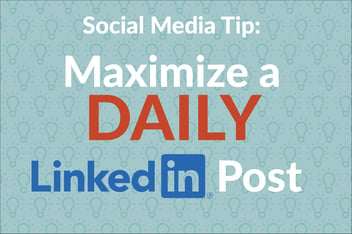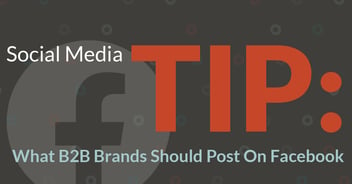How to Link Social Media to Lead Generation

How do most readers find your content? Search? Email or RSS feed subscriptions? Or is it through the platforms on which the most online time is spent: social media?
HubSpot has found that companies that published more than 16 blog posts per month got almost 3.5 times more traffic than companies that published 4 or fewer monthly posts. (Source) But publishing the posts, and creating content and resources such as that in our Inbound Marketing Learning Library isn’t enough. You need to promote those posts and content offers in order to drive even more traffic than what you receive through organic search alone.
One key place to promote your blog posts and content offers, boosting online lead generation potential, is through social media.
As of 2015, 90 percent of young adults use social media, compared with 12 percent in 2005. (Pew Research Center, 2015) (Source)
While social media algorithms, and therefore the best ways to post and promote on each platform, change constantly, businesses need to use social media as an integral part of their inbound marketing strategies, continually monitoring their own analytics to match their own target audience’s characteristics.
Promoting blog posts and content offers with Facebook
Facebook is the largest of the social media networks, with 1.13 billion daily active users. Of those, 73 percent say they use Facebook for professional purposes. (Source: HubSpot)
This makes Facebook an essential place for nearly every business to have a presence. Some small businesses have even used Facebook pages as a replacement for a website (which we don’t recommend - check Why Wouldn’t A Small Business Have a Website?).
To maximize your Facebook efforts, consider:
-
Using images with your posts. Images increase engagement by 2.3x that of posts without image. (Source: HubSpot)
-
Using very short, or very long, posts. Posts with 10 or fewer words, or with 100+ words, generate more interaction that average length posts. (Source: TrackMaven)
-
Posting content that will entertain, inspire, advise or give away free resources.
Promoting blog posts and content offers with LinkedIn
LinkedIn, of course, is the home of all things business, professional and job-related. So it should be no surprise that 41 percent of B2B marketers say LinkedIn is their most important social media platform. After all, 74 percent of B2B decision makers used LinkedIn to make purchasing decisions. (Source: Webbiquity)
While your Facebook posts can lean toward the entertaining and witty, LinkedIn takes a more subdued approach. Interaction, though, still increases when you use an image, ask a question or include a link.
Promoting blog posts and content offers with Twitter
Twitter, with its fast-moving feed, is also a favorite amongst B2B marketers, with 88 percent using it for content distribution. (Source: Webbiquity)
Practical Ecommerce describes Twitter as the “front door and foyer” of a social media home. It’s a place to meet and break the ice before inviting someone into your living room (Facebook) or library (blog) for a more involved conversation.
Ways to use Twitter best:
-
Listen and follow, as much as you speak (tweet). This includes sharing information from others.
-
Keep it short. Think of it as a scrolling newsfeed.
-
Tweet often. Because of the speed at which the Twittersphere operates, what you post will quickly be gone, so you can post more often than you would to other social media platforms.
-
Use a variety of content. Images, videos and links generate more interaction.
Promoting blog posts and content offers with Pinterest
Pinterest is one social media platform where images rule. Infographics are a natural content form for the visual platform. You’ll find our complete collection of original infographics on inbound marketing and content here.
(Find the whole book of how to use Pinterest for business marketing here.)
While it is dominated by food-related content, and an 80 percent female audience, it can also play a role in B2B marketing.
TrackMaven points out these benefits and best practices for using Pinterest, even in a B2B content marketing strategy:
-
Showcase infographics. Unlike Facebook, LinkedIn and Twitter, Pinterest does not have strict (horizontal) size guidelines for images that appear in users’ primary feeds, making it the ideal place to show off those tall infographics that readers like to see.
-
Aggregate your blog posts. Pinterest can provide another location for a blog library, using your cover images and links to your website.
-
Maximize SEO. Pins and pinboards are often among the top results in Google searches, especially when searchers are looking for infographics, images or how-tos. (Find tips for maximizing your Pinterest SEO efforts in this blog post.)
Of course, the most important part of using social media as a component of your inbound marketing strategy is this:
LINK TO YOUR BLOG, CONTENT OFFERS AND WEBSITE.
Sorry, I shouldn’t shout. But it must be said. Don’t make the social media mistake of treating it as a separate tool. It is a vital part of your lead generation efforts because it drives visitors to your website where they can engage with your business blog or access content offers and enter an automated lead nurturing program.
Using social media to promote your blog posts and content offers is just one 30 ways to improve your online lead generation through inbound marketing. Download our free Lead Generation Tips, Tricks & Ideas ebook to find 29 more.
-1.png?width=1652&height=294&name=Jones(RGB)-1.png)












